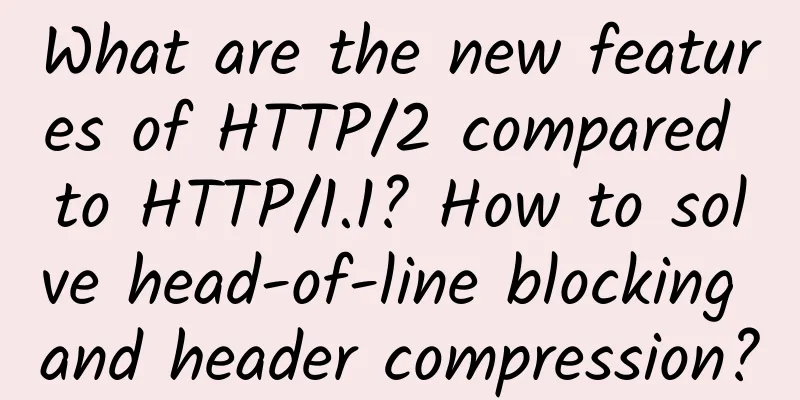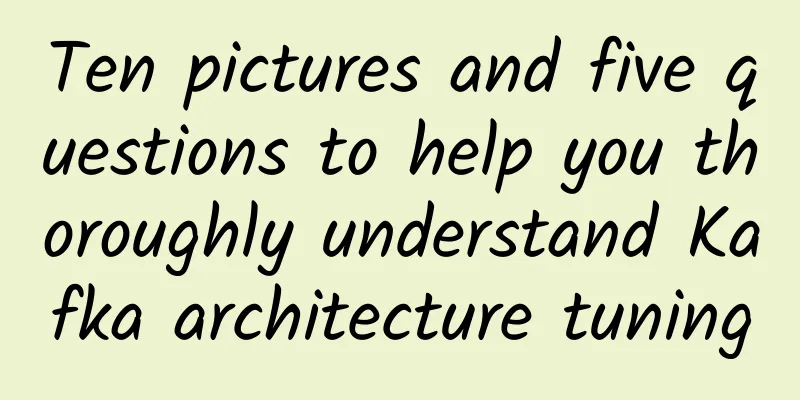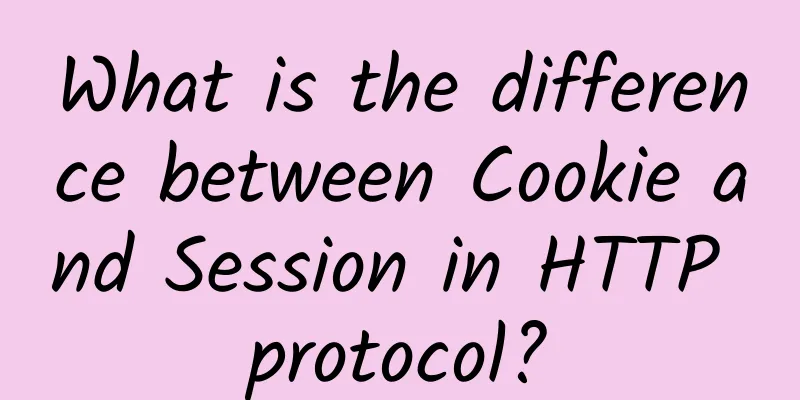What are the new features of HTTP/2 compared to HTTP/1.1? How to solve head-of-line blocking and header compression?

|
This article is reprinted from the WeChat public account "Learn Front-end in Three Minutes", author sisterAn. Please contact the WeChat public account "Learn Front-end in Three Minutes" to reprint this article. introductionThis article mainly introduces HTTP/2 step by step through the following four aspects:
What has changed since HTTP/1.1 was invented?If you look closely at the resources that the most popular website homepages download in recent years, you’ll find a very clear trend:
As shown in the figure below, the size of data transferred and the average number of resources requested have continued to grow since 2011, with no signs of slowing down (green: size of data transferred, red: average number of resources requested): Since HTTP/1.1 was released in 1997, we have been using HTTP/1.x for quite some time, but the explosive growth of content in recent years has made HTTP/1.1 increasingly unable to meet the needs of the modern network. HTTP/1.1 protocol performance flaws1. High latency: page access speed decreases Although network bandwidth has grown rapidly in recent years, we have not seen a corresponding reduction in network latency. This is mainly due to the Head-Of-Line Blocking problem. HTTP/1.1 introduced the pipelining mechanism, which means that in the same TCP connection, the client can send multiple requests at the same time, further improving the efficiency of the HTTP protocol. However, this requires the server to return responses in the order in which the requests were sent. When multiple files are requested sequentially, if one of the requests is blocked for some reason, all the requests queued behind it will also be blocked. This is called Head-Of-Line Blocking. Head-of-line blocking causes bandwidth to not be fully utilized Therefore, people have tried the following methods to solve the head-of-line blocking problem:
Use tools such as webpack to package: package and compress multiple JavaScript files into one file, replacing multiple requests with one request. However, this brings the problem that when a js file changes, all js files in the same package need to be requested again. Load on demand: to reduce the number of HTTP requests in the first place 2. Plain text transmission: unsafe When HTTP/1.1 transmits data, all transmitted content is in plain text, and neither the client nor the server can verify the identity of the other party, which to a certain extent cannot guarantee the security of the data. 3. Stateless: huge head cut and repeated Since the HTTP protocol is stateless, each request must carry an HTTP header, especially for headers that carry cookies, which are usually very large in size. In addition, there are User Agent, Accept, Server, etc., which are usually hundreds of bytes or even thousands of bytes, but the Body is often only tens of bytes. 4. Server push is not supported HTTP/1.1 does not support server push messages, so when the client needs to get notifications, it can only continuously pull messages through a timer, which undoubtedly wastes a lot of bandwidth and server resources. HTTP/2 New FeaturesIn HTTP/1.x, for performance reasons, we introduced sprite sheets, inlined small images, used multiple domain names, etc. However, there were still some key points that could not be optimized, such as huge and repeated HTTP headers, unsafe plain text transmission, and the server could not actively push. To change these, the HTTP protocol must be redesigned, so HTTP/2 came out! In 2015, HTTP/2 was released. HTTP/2 is a replacement for the current HTTP protocol (HTTP/1.x), but it is not a rewrite. The HTTP methods/status codes/semantics are the same as HTTP/1.x. HTTP/2 is based on SPDY and focuses on performance. The biggest goal is to use only one connection between the user and the website. Judging from the current situation, some of the top-ranked sites at home and abroad have basically implemented the deployment of HTTP/2. Using HTTP/2 can bring 20%~60% efficiency improvement. You can use this link to get a feel for how much faster HTTP/2 is than HTTP/1: https://http2.akamai.com/demo 1. Binary transfer How does HTTP/2 achieve "breaking through the performance limitations of HTTP1.1, improving transmission performance, and achieving low latency and high throughput" without changing the semantics, methods, status codes, URIs, and header fields of HTTP/1.x? One of the keys is to add a binary framing layer between the application layer (HTTP/2) and the transport layer (TCP or UDP). In the binary framing layer, HTTP/2 divides all transmitted information into smaller messages and frames, and encodes them in binary format. The header information of HTTP1.x will be encapsulated into the HEADERS frame, and the corresponding Request Body will be encapsulated into the DATA frame. After HTTP/2 data framing, the "Header+Body" message structure completely disappears, and the protocol only sees "fragments". In HTTP/2, all communications under the same domain name are completed on a single connection, which can carry any number of bidirectional data streams. Each data stream is sent in the form of a message, which in turn consists of one or more frames. Multiple frames can be sent out of order and can be reassembled according to the stream identifier in the frame header. 2. Header Compression (HPACK) HTTP protocol does not have state, and all information must be attached to each request. Therefore, many fields of the request are repeated, such as Cookie and User Agent. The same content must be attached to each request, which wastes a lot of bandwidth and affects the speed. HTTP/2 optimizes this by introducing a header compression mechanism. On the one hand, the header information is compressed using gzip or compress before being sent; on the other hand, the client and server simultaneously maintain a header information table, in which all fields are stored and an index number is generated. In the future, the same field will not be sent, only the index number will be sent, which increases the speed. 3. Multiplexing Multiplexing technology is introduced in HTTP/2. Multiplexing solves the problem of browsers limiting the number of requests under the same domain name. It also makes it easier to achieve full-speed transmission. After all, opening a new TCP connection requires slowly increasing the transmission speed. Multiplexing means that multiple streams can exist in one TCP connection. In other words, multiple requests can be sent, and the other end can know which request it belongs to through the identifier in the frame. This feature greatly improves HTTP transmission performance, mainly in the following three aspects: Multitasking HTTP/2 reuses TCP connections. In one connection, both the client and the browser can send multiple requests or responses at the same time, and they do not need to correspond one by one in sequence, thus avoiding "head of line blocking" Data Flow HTTP/2 sends multiple requests/responses in parallel and interleaves them without affecting each other. Therefore, the packet must be marked to indicate which request/response it belongs to. HTTP/2 calls all packets of each request or response a data stream. Each data stream has a unique number. When a data packet is sent, it must be marked with a data stream ID to distinguish which data stream it belongs to. It also stipulates that the ID of the data stream sent by the client is always an odd number, and the ID of the data stream sent by the server is an even number. When the data stream is halfway through being sent, both the client and the server can send a signal (RST_STREAM frame) to cancel the data stream. The only way to cancel a data stream in version 1.1 is to close the TCP connection. This means that HTTP/2 can cancel a request while ensuring that the TCP connection is still open and can be used by other requests. Priority In HTTP/2, each request can carry a 31-bit priority value, where 0 represents the highest priority and the larger the value, the lower the priority. With this priority value, the client and server can adopt different strategies when processing different streams and send streams, messages, and frames in the best way. 4. Server Push HTTP/2 allows the server to actively send resources to the client without request, which is called server push. A common scenario is that a client requests a web page that contains many static resources. Under normal circumstances, the client must parse the HTML source code after receiving the web page, find the static resources, and then send a request for the static resources. In fact, the server can anticipate that after the client requests the web page, it is likely to request static resources again, so it proactively sends these static resources to the client along with the web page. This can reduce the delay time relatively. Of course, you can also use prefetch if the browser is compatible. Note: The server can actively push, and the client can also actively choose whether to receive. If the resource pushed by the server has been cached by the browser, the browser can reject it by sending a RST_STREAM frame. In addition, active push also complies with the same-origin policy. 5. Improved security For compatibility reasons, HTTP/2 continues the "plain text" feature of HTTP/1. It can transmit data in plain text as before, and does not force the use of encrypted communication. However, HTTPS is already a general trend, and major browsers have publicly announced that they only support encrypted HTTP/2. Therefore, HTTP/2 in real applications is still encrypted: HTTP/2 Legacy IssuesDoes HTTP/2 still cause head-of-line blocking? HTTP/2 also suffers from head-of-line blocking issues, such as packet loss. If it causes head-of-line blocking, the problem may be more serious than http1.1, because there is only one TCP connection, and subsequent transmissions have to wait for the previous one. HTTP/1.1 has multiple TCP connections, and if one is blocked, the others can still run normally. Will there still be congestion under HTTP/2? Network congestion is improved due to the reduction of TCP connections; Slow start time is reduced, and recovery from congestion and packet loss is faster. refer to Deciphering the new features of HTTP/2 and HTTP/3: https://www.infoq.cn/article/ku4okqr8vh123a8dlccj |
<<: Node.js knowledge - How to set cookie information in HTTP request and response
>>: 5G cannot enhance industry?
Recommend
Internet of Things in 2018: Application scope is getting wider and wider, and NB-IoT will take the lead
Currently, 5G and the Internet of Things have bec...
Exploration of 5G and edge computing applications in the post-epidemic era
AT&T and many other leading wireless network ...
Huawei: Adhering to basic innovation and consolidating the foundation is the key to the flourishing of new infrastructure
On September 23, the "New Infrastructure New...
80VPS: Korean CN2 server starting from 350 yuan/month, 2*E5-2450L/8GB/1TB/10M bandwidth/quick launch
80VPS is a Chinese hosting company that was estab...
How to unify heterogeneous networks within a home? 6LoWPAN is a good choice
Part 01 What is 6LoWPAN In order to enable low-sp...
Comprehensive Anatomy of Data Center Facility Planning and IT Operations Checklist
Making the right choices in terms of data center ...
Four SD-WAN misconceptions
When any technology or service is sold in large q...
What network automation certification options are available today?
Networks are increasingly reliant on software and...
What will 5G replace?
[[411646]] What will 5G replace? 5G's lightni...
Huawei CloudEngine 16800 switch has been successfully put into commercial use. Why did BIT choose Huawei?
[51CTO.com original article] Recently, at the Hua...
How to future-proof your home network with FTTR
The demand for high-speed internet and seamless c...
In the era of 5G, it is not only about internet speed and mobile phones, but you have also overlooked these
[[393747]] When it comes to 5G, is your first rea...
The origin and development of Ethernet, you will understand after reading this!
Basics 1. About Ethernet Ethernet was developed b...
The next generation of Internet communication networks is about to be deployed. Is IPv6 security protection ready?
Recently, the General Office of the Communist Par...
Can 5G extend the life of HTC’s desperate VR business?
5G is like a "tonic pill" that has sudd...









